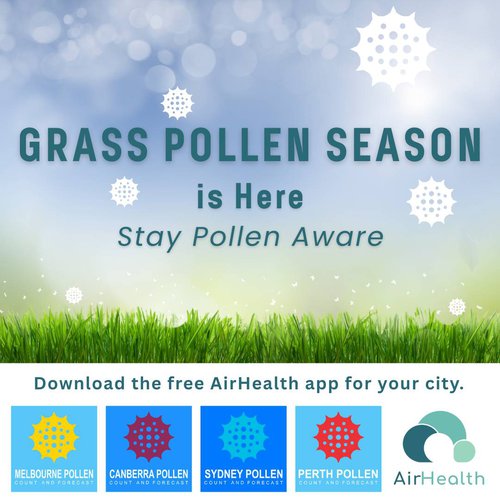Grass Pollen Season Has Begun: What You Need to Know
Oct. 1, 2025

Today marks the official start of the grass pollen season in across much of southern Australia. For many, spring brings warmer weather and blooming landscapes. But for the one in four Australians who experience hay fever and the millions living with asthma, this time of year can also mean itchy eyes, runny noses, and increased breathing difficulties.
Why October Matters
Grass pollen is the main outdoor allergen during spring and early summer. Each year, from 1 October to 31 December, AirHealth monitors daily pollen levels and provides forecasts to help the community prepare and manage their health.
High pollen days can trigger hay fever and asthma symptoms. Particular weather conditions such as thunderstorms can lead to dangerous events like epidemic thunderstorm asthma. The devastating event of November 2016 showed just how serious these conditions can be, highlighting the need for timely forecasts and public awareness.
How We Monitor Pollen
Our team operates specialised monitoring equipment across Australia to capture daily pollen counts. Using these data, along with weather information, we produce accurate forecasts for the coming days. This real-time information helps people with asthma and allergies make decisions about their daily activities, whether that is adjusting medication, closing windows on high pollen days, or staying indoors when risk levels are extreme.
What You Can Do This Season
- Check the daily forecast: Download AirRater or your local pollen app (Melbourne Pollen, Sydney Pollen, Canberra Pollen, Perth Pollen). Make sure you enable notifications so you receive alerts when conditions change.
- Follow your treatment plan: If you have been prescribed preventer medication or carry an asthma inhaler, make sure you are using them as directed.
- Prepare for high pollen days: Keep windows and doors closed, and consider staying indoors if pollen levels are high.
- Stay alert for thunderstorms: Combined with high pollen counts, storms can rapidly worsen symptoms, especially for people with asthma.


